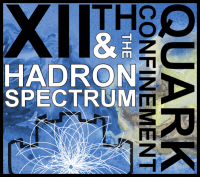Speaker
Description
The anomalous magnetic moment of the muon $(g-2)_\mu$ has been measured and computed to very high precision of about 0.5 ppm. For more than a decade, a discrepancy has persisted between experiment and Standard Model prediction, now of about $3\sigma$. The main uncertainty of the theory prediction is due to strong interaction effects. With the expected improvement of the input for hadronic vacuum polarisation, in a few years the subleading hadronic light-by-light (HLbL) contribution will dominate the theory error.
While some constraints from QCD exist, the calculation of the HLbL contribution to the $(g-2)_\mu$ is plagued by a substantial model dependence. In this talk, I will present a dispersive approach to HLbL scattering, based on the fundamental principles of unitarity and analyticity. We have derived a Lorentz decomposition of the HLbL tensor that is fully gauge-invariant and crossing symmetric. The scalar coefficient functions of this tensor decomposition are free of kinematic singularities and zeros and fulfil Mandelstam's double-dispersive representation. The dispersive formalism defines unambiguously and in a model-independent way both the pion-pole and the pion-box contribution. Two-pion rescattering effects are included in a partial-wave picture.
Our dispersive formalism shows a path towards a data-driven determination of the HLbL contribution to the $(g-2)_\mu$.




